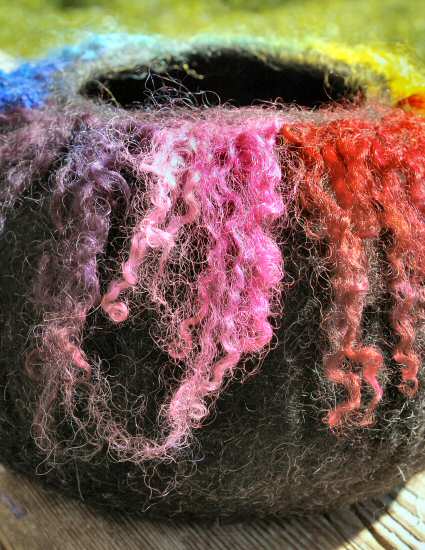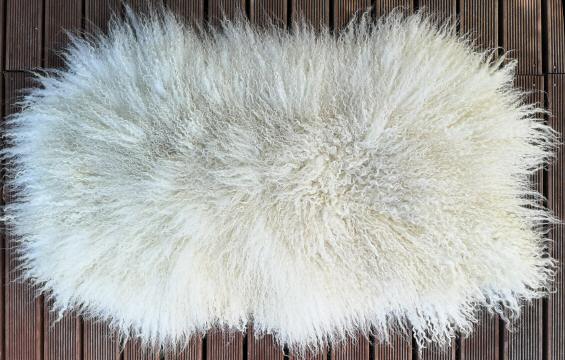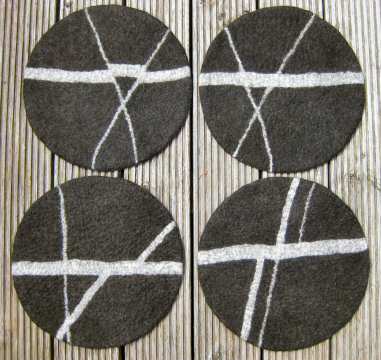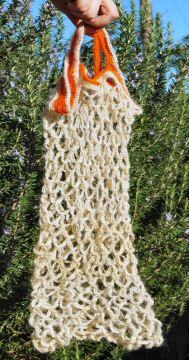Rare Breeds Fibre
Valais Blacknose Sheep

Vessel made of black Spitti wool and dyed Valais curls.
Valais Blacknose sheep are called the “cutest sheep in the world”. But for felters another feature is much more interesting than their cuteness – their beautiful wool felts extremely well and is great for a variety of products.
Valais Blacknose wool has a high lustre and takes dye beautifully. If you throw a mix of different sheep breed’s wool into the same dye pot you can be sure the Valais Blacknose locks will be among the winners in absorbing the dye. Apart from the black wool around the nose and eyes, ears, knees, feet and hocks, Valais Blacknose sheep have a shiny white fleece. Sometimes a black fleeced lamb is born (even among the well behaved Valais Blacknose sheep!). Those are called “Spitti” and their wool is like shiny anthracite.
The curls have a spiraling shape, rather than wavy as other long wool breeds. There is a wide variety of fleece structure among the Valais Blacknose breed – some have rather small curls, others large and open. The fleece ranges from very well defined locks to fluffy. So if you are after a Valais Blacknose fleece it would be best to have a look at it before purchasing, as the fleeces can vary so much. Furthermore, if the sheep is not shorn at the right time the wool gets too felted on the sheep and will be difficult to work with later.
The Valais Blacknose sheep have an amazing wool growth. They are shorn twice a year, but their fleece still grows to a great length before shearing. That’s one of the reasons why their wool is just amazing for felted sheepskins or so-called vegetarian sheepskins. The adult wool easily gets cross-fibred at the base and when shorn, the fleece often comes off in one piece. With some carded wool added on the backside (shorn side) and felting via rubbing, a sheepskin – as in the next photograph – can be done in a rather short time.

Felted "vegetarian sheepskin".

Felted cushion stones.
The Valais Blacknose wool doesn’t have much grease, compared to other breeds, which makes is more attractive to work with in its raw state.
The adult wool is very coarse – after all the sheep lives under very rough conditions up in the mountains. It’s not a wool you would want to wear on your skin, but it’s wonderful for interior design. It felts very quickly (as fast as fine Merino wool) into a firm and robust felt. This makes the wool a great choice for large sculptural objects such as vessels.
On the other hand it can also be used as a very thin felt for “transparent” felting. A good choice of wool for felted lights or lamp shades as the structure of the Valais Blacknose curls are still clearly visible in the thin felt and yet it is sturdy enough even when laid out thinly.
Conversely, the lambswool is amazingly soft and very airy, looking similar to the popular Tibetan or Mongolian lambswool used as lambskins in interior design. It has a great lustre, too, but on its own doesn’t felt well.

The long staple of a Valais Blacknose fleece.

Vintage shopping bag, crocheted from a Valais Blacknose fleece.

Socks knitted from dyed Valais Blacknose wool.
• Valais Blacknose breed page •
Thanks to Sabin Imhasly for supplying the information on this page.The first three photographs are from Sabin and the bottom three from Marina Steinke.